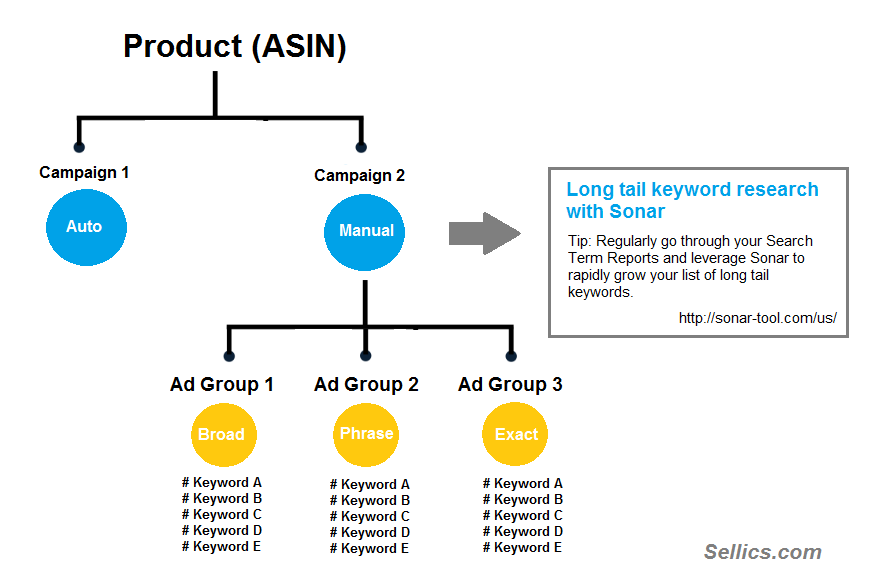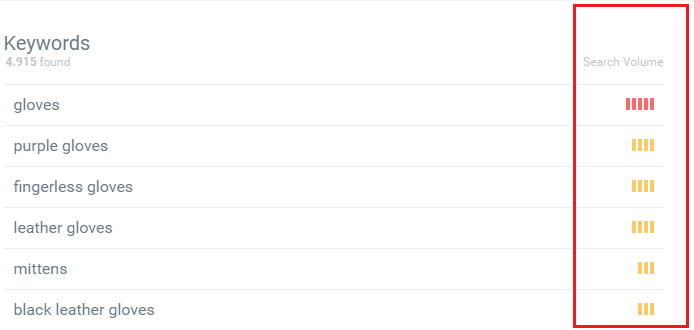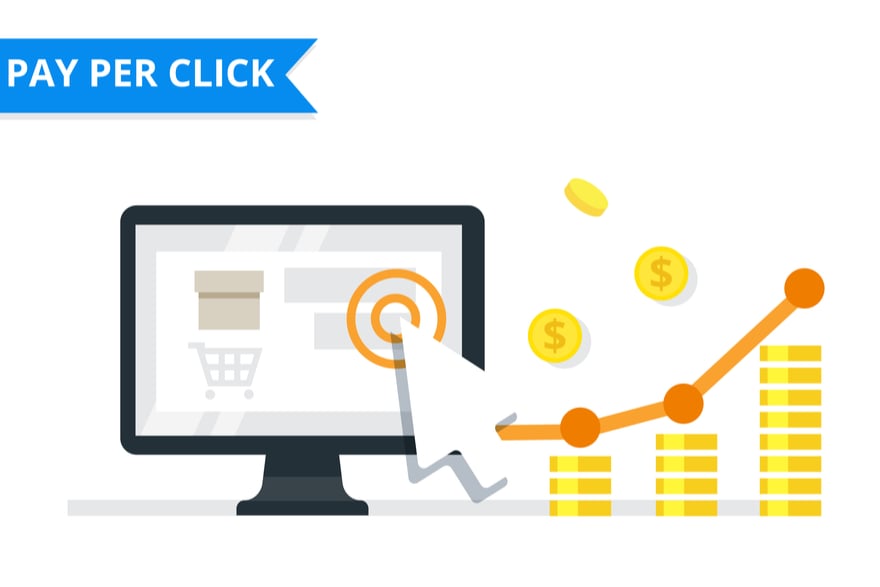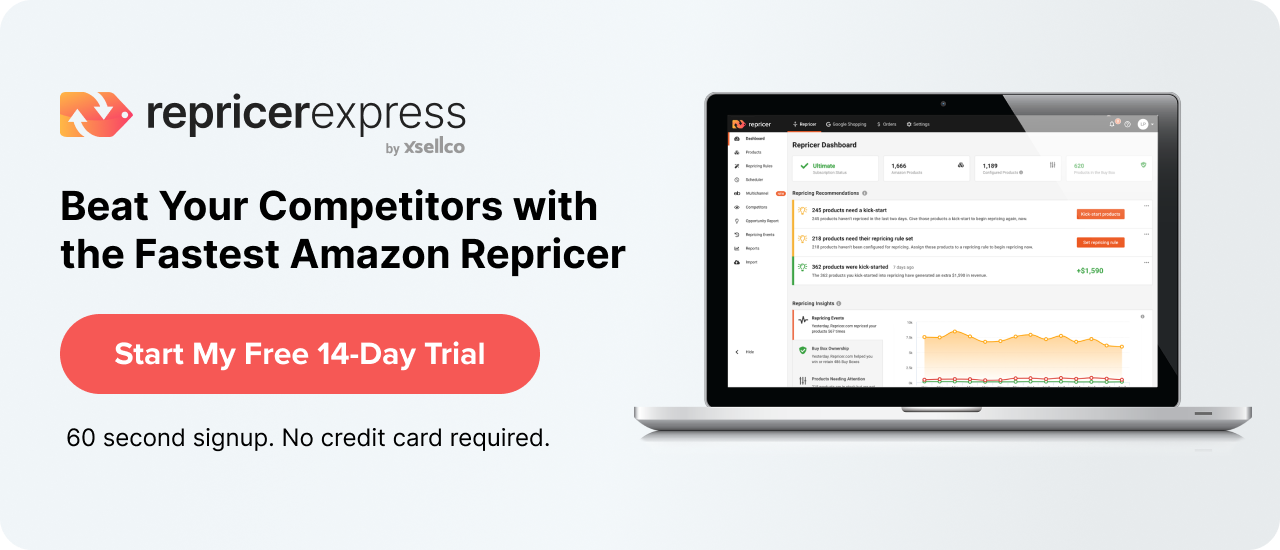Running an Amazon PPC campaign can be a very lucrative method for sellers to drive substantial sales for their product, increase the potential for more reviews, and boost visibility for new products.
However, it requires Amazon sellers to invest in a substantial amount of time to ensure their ad campaigns are correctly structured from the start. As a seller, this becomes critical as your business scales and you quickly find yourself managing a rapidly growing set of ad campaigns.
Below we will walk you through our recommended approach for structuring a Sponsored Products campaign, and our tips to help you get started with Amazon PPC optimisation.
How to Structure Your Amazon PPC Campaign
- For each product (ASIN), you will create two campaigns; one automatic campaign and one manual campaign.
- Create your automatic campaign first and let it run for 1-2 weeks minimum.
- After you’ve collected a reasonable amount of data, download your Search Term Report and go through it to find your high converting keywords to add into a new manual campaign.
- For your manual campaign, you will want to create three separate Ad Groups (for each keyword match type); one for Broad Match, Phrase Match & Exact Match.
- Set the duration and budget for your automatic and manual campaign. For your manual campaign, you will also want to set the daily bid; start with the estimated bid provided by Amazon and adjust accordingly.
Note: If this is your first ad campaign, we recommend setting up a budget of $10 per day, and keep the duration open-ended to track ongoing changes in your campaign.
Tip: Make sure to comb through your Search Term Report for long-tail keywords; these are the keywords used by customers with more specific search intent, meaning you will be targeting customers further down the conversion funnel. Long-tail keywords are lucrative for sellers because they tend to have a higher conversion rate and a lower CPC cost, as there is less competition for these keywords.
Amazon Keyword Research Tool
Use Sonar (free Amazon keyword research tool) to quickly scale your list of relevant keywords. Type in a keyword related to your product and pick the most relevant keywords (e.g. keywords with a high search volume) from the results.
Sonar will display a search volume estimate for each keyword suggestion; this will help you to quickly identify the ‘valuable’ keywords you will want to add to your manual campaign.

You can also copy & paste the long-tail keywords you’ve identified in your Search Term Report into Sonar, which will then generate an expansive list of relevant keywords, which you’ll be able to export via Excel and add into your manual campaign.

After 4-6 weeks, it will generally become clear which keywords perform better than others. At this point, you will want to gradually reduce bids for the non-converting keywords you’ve identified.
Important note: Avoid changing bids too quickly, you will want to make sure you have collected enough data before making any bid adjustments. A general rule of thumb is to collect at least 1,000 impressions, and ideally more than 5, 000 impressions, since the typical Click Through Rate (CTR) is at 0.2% (i.e. 100 clicks). Also, avoid making drastic bid changes; you will want to incrementally increase/lower bids by 20-30%.
Learn to Optimise Your CPC Bids
Once you’ve set up an ad campaign for your Amazon product, you will need to learn to optimise your CPC bids, to keep your ad spend in check and avoid bidding on keywords that are unlikely to convert for you.
Sellers need to understand that testing your bids is at the core of CPC optimisation, and you can only optimise your bids if you have collected enough data to make informed decisions on whether you should lower/increase keyword bids.
First, you will need to calculate your target Amazon ACoS (Average Cost of Sale). By comparing your actual ACoS to your target ACoS, you will be able to measure how well your ads are performing against your goal profit margin.
Guidelines for Amazon CPC Optimization
- If your actual ACoS> target ACoS, it means you’re spending too much, i.e. you should lower your bid to test whether you can lower your ad spend without it affecting your sales considerably.
- If your actual ACoS< target ACoS, it means you have more budget to spend, i.e. you should raise your bid and test whether your ad reach (and therefore your sales) can expand exponentially.
- If your keywords are not receiving any impressions, check the product category (‘browse node’) and make sure that it is correct and that you have the keyword included in your listing or backend keywords. If your product category is correct and the keyword is included in the listing, then you will want to start increasing your bid, to test whether a higher bid can make the keyword ‘active’.
- Keywords that do not generate any sales over a longer period of time, and remain unprofitable even after the keyword bid is lowered, should be removed from your manual campaign and added to your negative keyword list.
For Amazon sellers, it’s important to invest the time to learn how to structure your PPC campaigns correctly on Amazon. This becomes critical as your product volume grows, and you will want to have an optimal ad campaign structure in place which you can easily scale to support the growth of your Amazon business.






